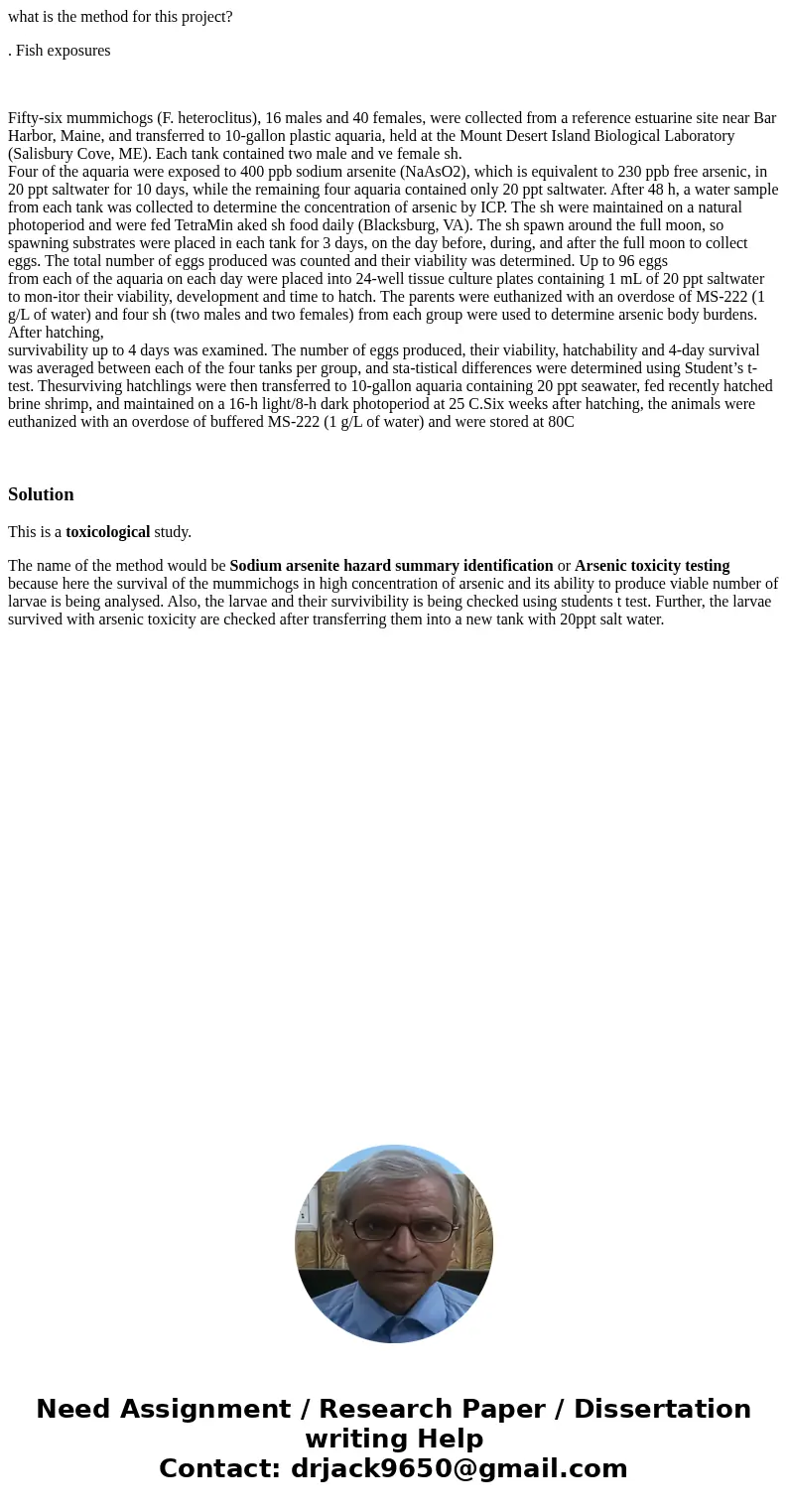what is the method for this project Fish exposures Fiftysix
what is the method for this project?
. Fish exposures
Fifty-six mummichogs (F. heteroclitus), 16 males and 40 females, were collected from a reference estuarine site near Bar
Harbor, Maine, and transferred to 10-gallon plastic aquaria, held at the Mount Desert Island Biological Laboratory (Salisbury Cove, ME). Each tank contained two male and ve female sh.
Four of the aquaria were exposed to 400 ppb sodium arsenite (NaAsO2), which is equivalent to 230 ppb free arsenic, in 20 ppt saltwater for 10 days, while the remaining four aquaria contained only 20 ppt saltwater. After 48 h, a water sample from each tank was collected to determine the concentration of arsenic by ICP. The sh were maintained on a natural photoperiod and were fed TetraMin aked sh food daily (Blacksburg, VA). The sh spawn around the full moon, so spawning substrates were placed in each tank for 3 days, on the day before, during, and after the full moon to collect eggs. The total number of eggs produced was counted and their viability was determined. Up to 96 eggs
from each of the aquaria on each day were placed into 24-well tissue culture plates containing 1 mL of 20 ppt saltwater to mon-itor their viability, development and time to hatch. The parents were euthanized with an overdose of MS-222 (1 g/L of water) and four sh (two males and two females) from each group were used to determine arsenic body burdens. After hatching,
survivability up to 4 days was examined. The number of eggs produced, their viability, hatchability and 4-day survival was averaged between each of the four tanks per group, and sta-tistical differences were determined using Student’s t-test. Thesurviving hatchlings were then transferred to 10-gallon aquaria containing 20 ppt seawater, fed recently hatched brine shrimp, and maintained on a 16-h light/8-h dark photoperiod at 25 C.Six weeks after hatching, the animals were euthanized with an overdose of buffered MS-222 (1 g/L of water) and were stored at 80C
Solution
This is a toxicological study.
The name of the method would be Sodium arsenite hazard summary identification or Arsenic toxicity testing because here the survival of the mummichogs in high concentration of arsenic and its ability to produce viable number of larvae is being analysed. Also, the larvae and their survivibility is being checked using students t test. Further, the larvae survived with arsenic toxicity are checked after transferring them into a new tank with 20ppt salt water.

 Homework Sourse
Homework Sourse